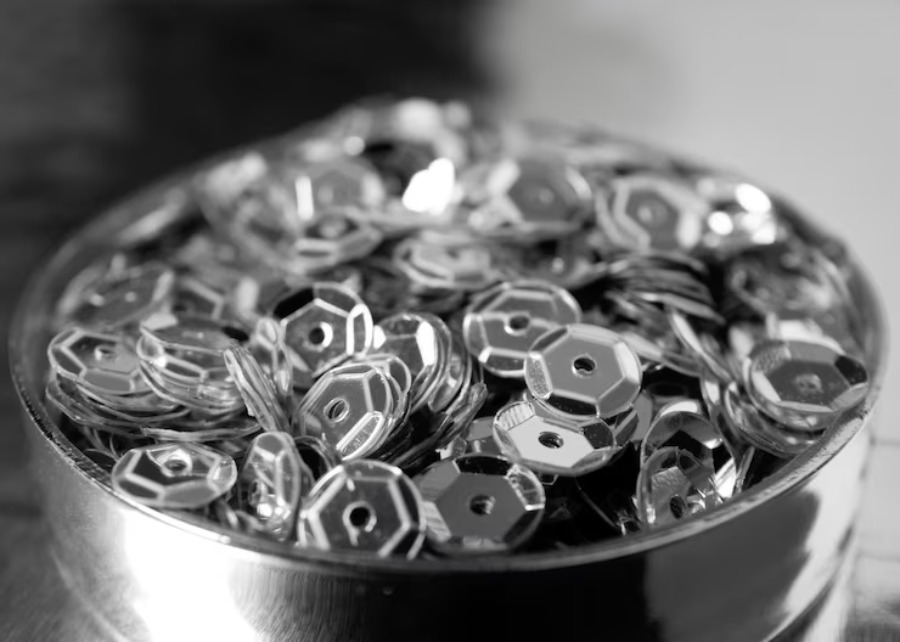Injection molding is a cornerstone of modern manufacturing, enabling the mass production of complex and high-precision plastic parts. The key to this process lies in the vast array of injection molding materials, each offering distinct properties that cater to a wide range of applications.
What Is Injection Molding?
Injection molding is a widely used manufacturing process for creating complex and high-precision plastic parts in large volumes. Here’s a breakdown of the key aspects of injection molding:
The Process:
Material Preparation: Plastic pellets or granules are fed into a hopper.
Melting and Mixing: The plastic is heated and melted within a heated barrel equipped with a screw mechanism. This screw also mixes the material to ensure uniformity.
Injection: The molten plastic is injected under high pressure into a mold cavity with the desired shape.
Holding: The plastic is held under pressure in the mold to allow for complete cooling and solidification.
Mold Opening and Ejection: Once solidified, the Zinc die casting mold opens, and the finished plastic part is ejected.
Cooling and Finishing: The ejected part may undergo additional cooling and trimming or finishing steps, depending on the specific application.
Some common injection molding materials
Here’s a comprehensive guide to exploring injection molding material and other ideal uses:
Common Thermoplastics:
Acrylonitrile Butadiene Styrene (ABS): A versatile and cost-effective material known for its good balance of strength, rigidity, and impact resistance. ABS is widely used for:
Consumer electronics housings (phone cases, keyboards)
Automotive interior parts (trim panels, dashboards)
Toys and sporting goods (building blocks, helmets)
High-Density Polyethylene (HDPE):
Known for its high strength, rigidity, and excellent chemical resistance. HDPE is a popular choice for:
Bottles and containers (detergent bottles, milk jugs)
Pipes and fittings (plumbing applications)
Industrial parts (gears, sprockets)
Low-Density Polyethylene (LDPE):
Offers flexibility, good chemical resistance, and moisture resistance. LDPE finds applications in:
Packaging films (grocery bags, food wrap)
Squeeze bottles and lids
Toys and disposable products
Polypropylene (PP):
A versatile material with good strength, chemical resistance, and heat deflection. PP is commonly used for:
Packaging (food containers, bottle caps)
Automotive parts (bumpers, interior components)
Textile fibers and medical supplies
Polystyrene (PS):
A cost-effective and lightweight material with good clarity. PS is often used for:
Disposable cups and cutlery
Packaging materials (blister packs, clamshells)
Toys and decorative items (limited due to brittleness)
Engineering Plastics:
Polycarbonate (PC): Offers exceptional strength, impact resistance, and excellent optical clarity. PC is ideal for:
Safety equipment (visors, goggles)
Medical devices (dialysis equipment, instrument housings)
Bulletproof glass applications
Nylon (PA):
A family of materials offering high strength, rigidity, wear resistance, and good heat deflection. Nylon is used for:
Gears and bearings (mechanical parts)
Electrical components (insulators, connectors)
Automotive parts (hoses, engine components)
Acetal Copolymer (POM):
Known for its exceptional stiffness, dimensional stability, and low friction coefficient. POM is suitable for:
Gears and bearings (precise mechanical parts)
Fasteners and clamps
Medical device components
Specialty Materials:
Acrylonitrile Styrene Acrylate (ASA): Offers UV resistance and weatherability, making it ideal for outdoor applications like:
Automotive exterior parts (trim panels, mirrors)
Building and construction components (exterior cladding)
Polyoxymethylene (POM):
Provides high strength, stiffness, and excellent dimensional stability for demanding applications like:
Gears and bearings (high-performance applications)
Medical implants (due to biocompatibility)
Liquid Crystal Polymers (LCP): Offer exceptional dimensional stability, heat resistance, and flame retardancy, making them suitable for:
Electronic components (connectors, circuit boards)
Aerospace applications (due to lightweight and high-performance properties)
Choosing the Right Material:
Selecting the optimal injection molding material hinges on several factors:
Part Function: Consider the mechanical properties required for the part, such as strength, rigidity, flexibility, and heat resistance.
Environmental Factors: Will the part be exposed to heat, chemicals, UV radiation, or moisture? Choose a material with appropriate environmental resistance.
Cost and Aesthetics: Balance the material cost with the desired aesthetics and surface finish of the final part.
Processing Considerations: Certain materials might require specific processing conditions or have limitations on part geometry.
Conclusion:
Injection molding materials offer a vast spectrum of choices, each catering to specific applications. Understanding the properties and limitations of these materials empowers manufacturers to select the most suitable option for their needs. By considering part function, environmental factors, cost, and processing requirements, you can leverage the versatility of injection molding to create high-quality plastic parts across diverse industries. As new materials and advancements in injection molding technology emerge, the possibilities for creating innovative and functional plastic products will continue to expand.
Read More:

